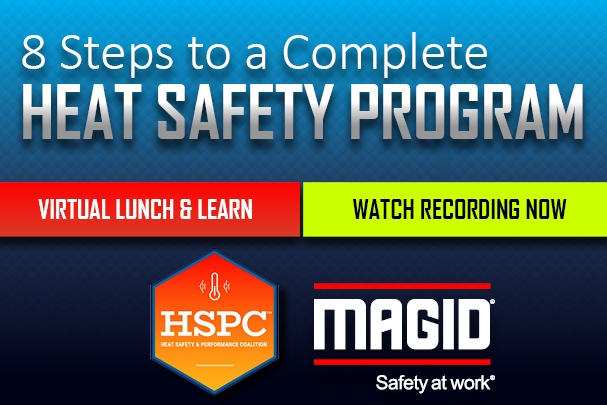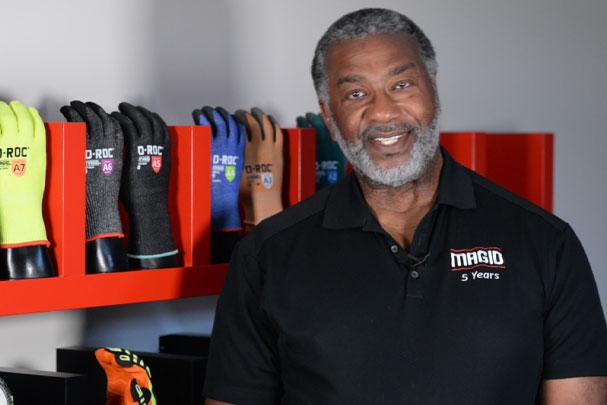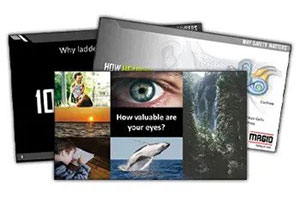
7 Heat Illness Myths in Indoor Manufacturing Facilities
By M.B. Sutherland, Sr. Safety Writer, Magid
It’s easy to think that heat illness is just an outdoor problem. But while it’s true that hot indoor locations don’t have to contend with the sun beating down, and they may offer more opportunities for cooling, these facilities can be just as dangerous and full of avoidable heat safety issues as outdoor jobsites. Test your knowledge with these seven indoor heat safety myths!


Myth #1: Indoor Manufacturing Facilities Are Not Hot Enough to Cause “Real” Heat Illness.
If you work in a forge, a glass plant, or any other hot, non-air-conditioned indoor shipping or manufacturing facility, you already know this one! While the factors below are true whether you’re indoors or outdoors, any of them can increase your workers’ risk of heat illness, including heat stroke.
Personal Factors:
- Alcohol & Medication – having a few drinks the night before work or even taking common over-the-counter allergy medications can lower a worker’s capacity to regulate their body heat.
- Dehydration – using thirst as your cue to drink isn’t enough. Teach your workers to hydrate before, during, and after work to stay safe when working in the heat.
- Underlying Health Conditions – every human is different. Diabetes, being overweight, and high blood pressure are just a few conditions that aren’t obvious to a casual observer, but that do increase the risk of heat illness.
Work Factors:
- Heat & Humidity – if your environment gets humid, be sure to factor in both heat and humidity when you schedule cooling measures and breaks since humidity impacts a body’s ability to release heat via sweating.
- Heavy Exertion – working hard in high temperatures can be doubly dangerous because it means workers are accumulating heat both internally and externally.
- Bulky Clothing & PPE – adding protective clothing in a hot work environment can naturally increase the risk of heat illness. But remember that the thick, itchy PPE of the past is not your only option! High performing gloves, clothing, and sleeves are now available that are cooler and lighter than ever before.
- Heavy Machinery/Radiant Heat – heavy machinery running in various areas of your facility can be sources of intense heat that affect the surrounding areas, increasing heat illness dangers for your workers.
- Confined Spaces – poor air quality resulting from working in enclosed or confined areas increases the risk of heat illness.


Myth #2: Pick A Spot In Your Facility To Measure The Temperature.
One area of your facility can be entirely different from another in terms of heat safety hazards when you factor in air flow, hot machinery, the number of people working in a space, and the size of the space itself. Hotter areas may require extra cooling breaks, more hydration, and additional body cooling measures both on and off the job. A WBGT (Wet Bulb Globe Temperature) monitor works both indoors and outdoors to measure radiant heat, humidity, air temperature, and air flow in different locations. This powerful tool provides a far more accurate measure of heat load in a variety of locations than a regular thermometer can.


Myth #3: Air-Conditioned Breakrooms Are Sufficient to Prevent Heat Illness.
A big advantage that hot indoor facilities have over hot outdoor jobsites is the availability of nearby air conditioning. But cooled lunch and break rooms can only help prevent heat illness if your employees have access to them at frequent enough intervals. Once symptoms of heat illness appear, it’s already too late to rely on air cooling alone. As the seasons and the days get hotter, add more breaks in your workers’ schedules to help people cool off. Make your break rooms into body cooling stations with constant access to cool drinks like water and electrolyte-replacing beverages, body-cooling PPE, and even cold cotton towels in refrigerators or freezers. Build in extra time for workers whose jobs require full coverage PPE or other gear, so they have time to remove their gear, cool their bodies thoroughly, and then properly don their gear again in preparation for the job without rushing. Expecting them to fit all of this into regular break times may tempt them to cut corners on safety or proper cooling.


Myth #4: Body Cooling PPE is Only Necessary for Outdoor Jobs.
Of course, most of the workday is spent…working. So it’s important to provide a means for your employees to cool down during the job, not just on breaks. Magid® Cool Powered by Mission® is the latest technology in body cooling PPE that allows workers to activate the material’s cooling properties with any temperature of water and reactivate again and again through the workday. The HydroActive™ cooling technology cools using the natural power of evaporation, eliminating the need for the chemical coatings that make other products feel slimy. These incredible products cool to as low as 30 degrees below average body temperature in under a minute and stay cool for up to two hours.




Myth #5: Higher Hazards Require Heavier PPE. Getting Overheated Is Normal On The Job!
It’s easy to see why this belief persists as the dangers in many glass plants, forges, and other facilities that include higher-hazard applications can call for almost full-body PPE to keep workers safe. That’s why Magid innovated cut-resistant protective tops that are 30% lighter, with the highest ANSI Level A9 cut levels. These new items increase cut protection at the neck, torso, and wrists by over 200% compared to some traditional, heavier weight garments. New sleeves and gloves on the market are 30% lighter than comparable products in materials as high as ANSI A9 protection along with new glove coating technologies that fit any environment. Other protective garments like welding jackets are available in mesh-backed versions to provide protection facing the hazard with cooling airflow in back. The same is true of aluminized chaps, for radiant heat and molten metal applications, that protect at the front but are open at the back to increase cooling opportunities.


Myth #6: Indoor Workers Can Drink Water Anytime. Heat Illness Isn’t A Worry Because Everyone is Hydrated.
There are really two myths at work here since workers, whether indoors or outdoors, often do not have enough access to hydration through the day. The first order of business should be to address this and make sure workers can drink anytime, before, during, and after their shift.
But even if you have that covered, remember that well-hydrated people still can suffer heat illness as severe as heat stroke. Heat stroke occurs when the body overheats enough that it can’t shed heat as fast as it’s accumulating it – regardless of hydration. If someone is exerting heavily in the heat, hydration alone will not keep them safe from heat illness. Let the 8 Simple Steps to a Complete Heat Safety Program be your guide to keep workers safe.


Myth #7: Getting An Ailing Worker Into The Air Conditioning Is Enough To Treat Heat Illness.
Getting a heat illness victim into a cooler area is just the beginning to treating heat illness and preventing the damage that it can cause. Pay attention to the victim’s symptoms, and treat them accordingly:
Heat Illness Symptoms & Treatment
| SIGNS & SYMPTOMS | TREATMENT | |
 |
|
|
 |
|
|
 |
|
|
Heat Stroke Symptoms & Treatment
TIME IS OF THE ESSENCE! YOU ONLY HAVE 30 MINUTES TO PREVENT LONG TERM OR PERMANENT INJURY


STAGGERING/PHYSICAL COLLAPSE


SATURATED/SWEATING FLUSHED SKIN


DIZZINESS


STRONG & RAPID PULSE


SEIZURES


HEADACHE


RAPID BREATHING


CONFUSION


IRRATIONAL BEHAVIOR
COOL FIRST, TRANSPORT SECOND!
The Victim Should Be Transported Only After Their Body Temperature Falls Below 102°F









